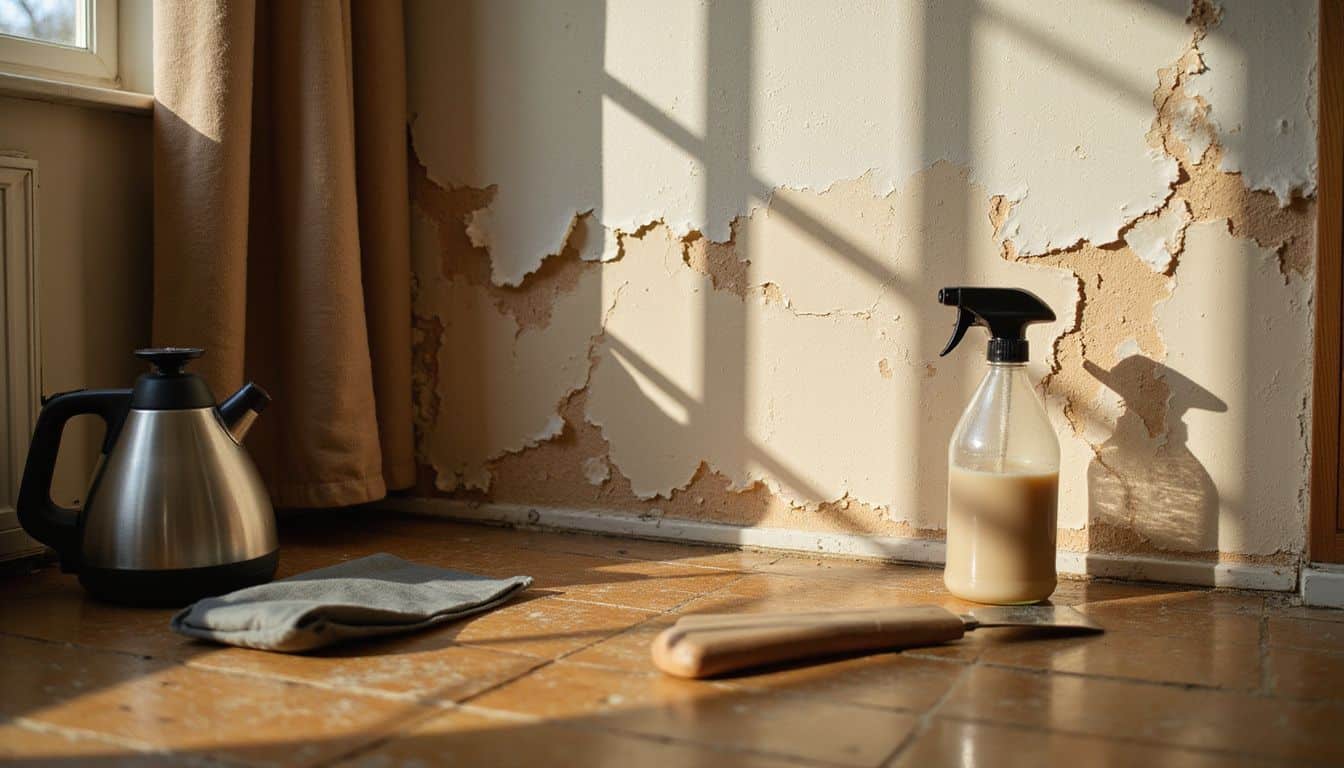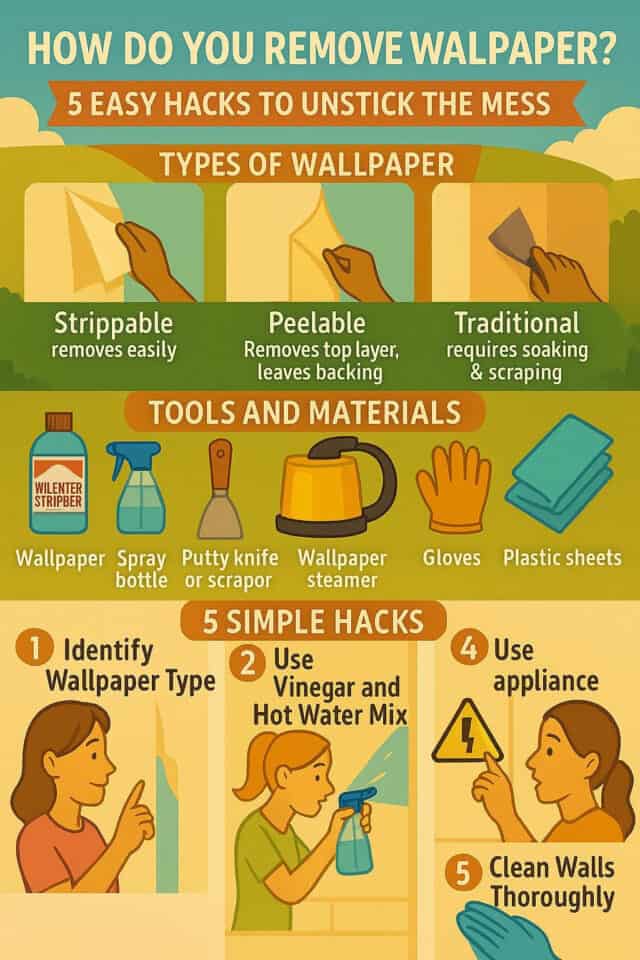Are you staring at old wallpaper and wondering, “how do you remove wallpaper” without hurting your walls? In fact, knowing the type of wallpaper—strippable, peelable, or traditional—makes removal easy.
This guide gives you 5 simple hacks using tools like a wallpaper steamer or homemade solutions to get the job done fast. Keep reading for quick tips to erase that sticky mess!
Key Takeaways
First, figure out your wallpaper type—strippable kinds peel off easily, older styles need extra effort.
Spraying on hot water mixed with white vinegar quickly loosens tough glue spots—easy and affordable.
For tougher stuff, a wallpaper steamer (usually under $75) softens glue fast using heat.
Before spraying liquids around outlets, turn off electricity to your workspace—this keeps things safe and worry-free.
After wallpaper’s down, wipe walls thoroughly using warm water mixed with TSP—this clears leftover glue before painting or papering again.
Table of Contents
Tools and Materials Needed
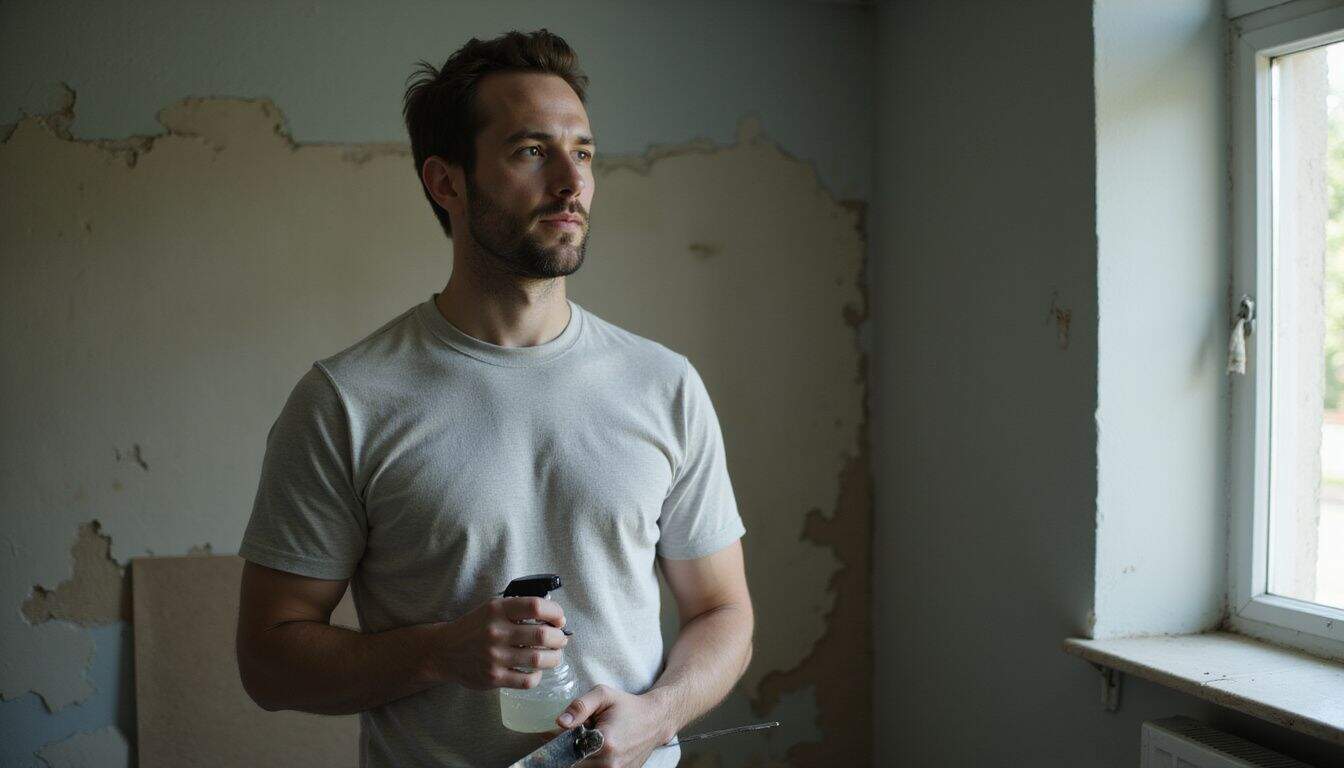
You’ll need a few key items before you start ripping off that old paper. Grab a spray bottle and scraper to make the job much easier.
Wallpaper stripper
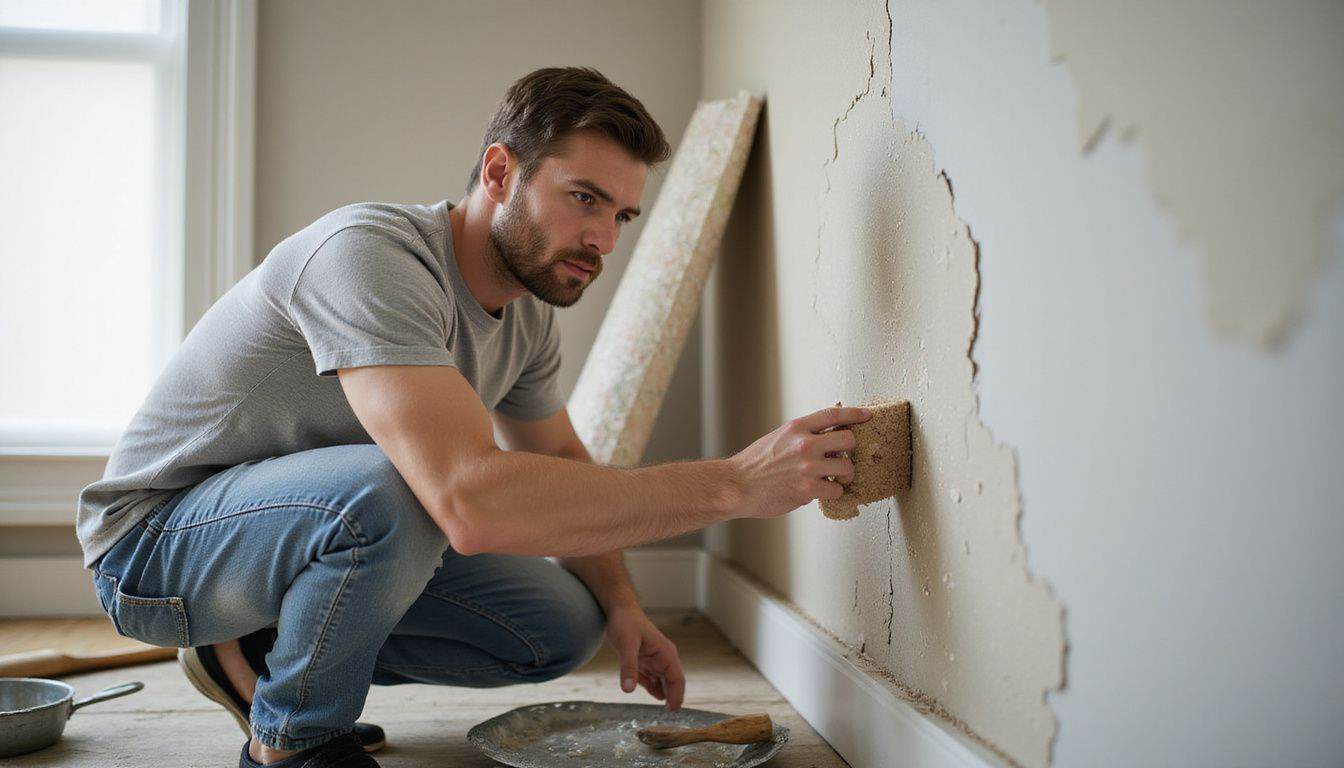
Using wallpaper stripper takes the headache out of removing old wall coverings. Popular options like DIF soften tough adhesives in just around 20 minutes. And they’re affordable—just $10 to $20 covers all your materials.
Simply apply the solution using a sponge or roller, wait a bit…and watch it work. The liquid loosens the glue, letting you peel and scrape away old paper without breaking a sweat.
These strippers typically come as sprays that are ready-to-use, or as concentrates you mix on your own. Either option is great for traditional wallpapers that stick tight and refuse to peel smoothly.
The right stripper solution can turn a weekend nightmare into an afternoon project.
After you remove that outdated wallpaper, your walls become the perfect surface for brand new Scandinavian-style wallpaper.
Just keep a window open for ventilation and pop on some gloves to protect your hands from harsh chemicals.
Spray bottle
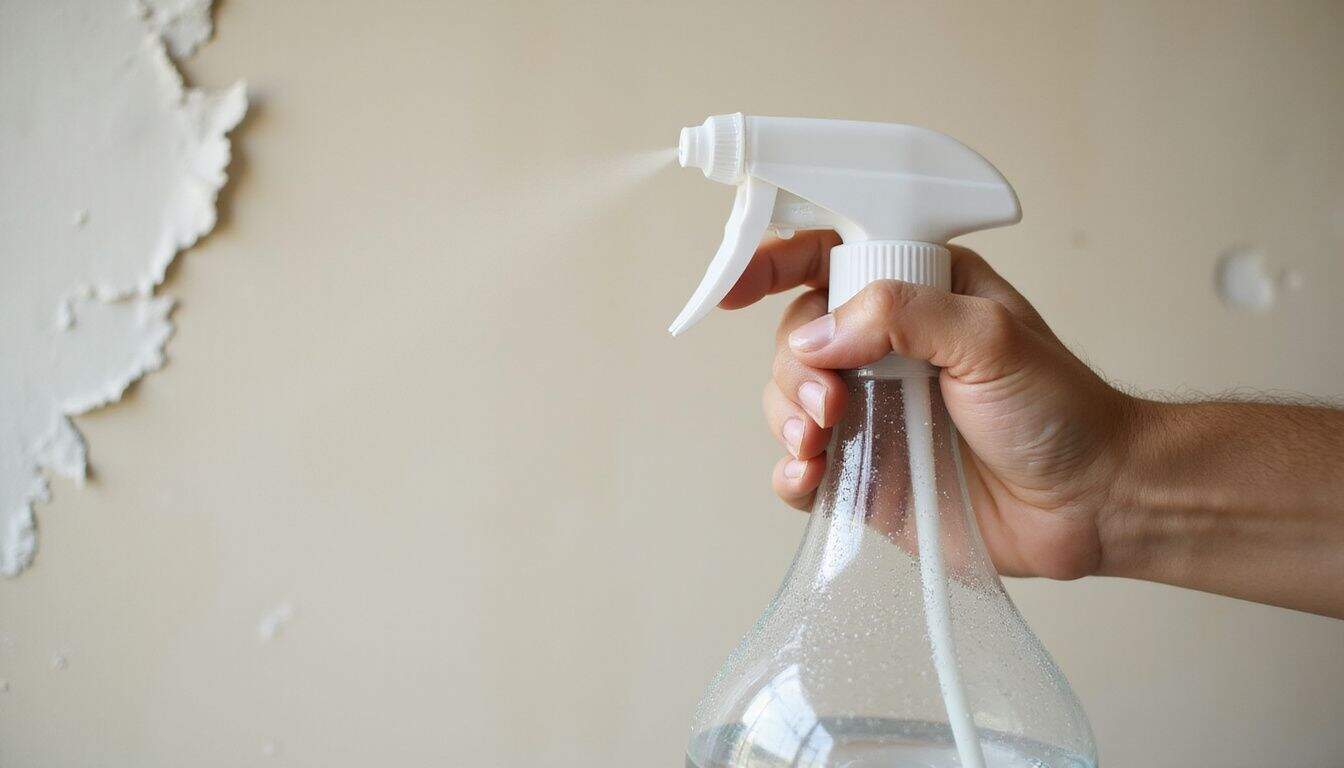
A spray bottle is your best buddy for easy wallpaper removal. Just mix a budget-friendly solution of 1/4 white vinegar and 3/4 hot water. White vinegar has acids that quickly dissolve tough adhesive—far better than water alone.
Spray evenly onto the wallpaper until it feels damp, not dripping wet. After spraying, let it sit 5-10 minutes to loosen the paper nicely. Work in small sections, around 3-4 feet, so things don’t dry out as you’re scraping.
Another simple trick is mixing warm water and fabric softener. Chemicals in fabric softener break up the wallpaper glue quickly, making removal easier. Just spray enough to wet the paper without making messy drips down your wall.
Use a decent plastic spray bottle with an adjustable nozzle, so you control how much liquid comes out. Much easier and faster than messing around with sponges or brushes.
Putty knife or scraper
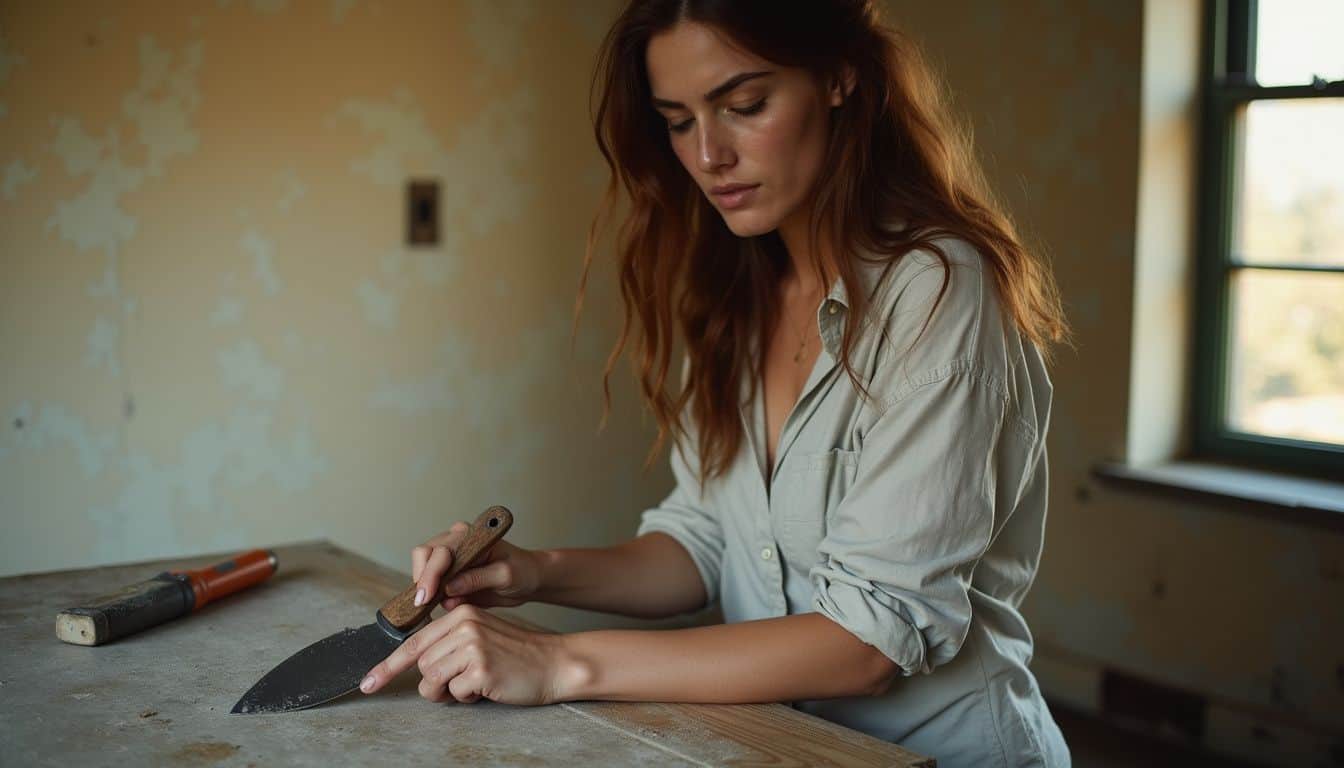
A solid putty knife is your best friend for wallpaper removal. Your toolkit needs a sturdy, 5-inch putty knife—perfect for lifting tough edges and scraping away old glue. First, loosen corners using something smaller, like a 5-in-1 painter’s tool.
These handy scrapers have flat, slim edges that easily slide beneath paper without damaging walls.
Always keep your scraping tools sharp—dull edges cause frustration and wall damage. Also, have a utility knife nearby for tricky spots around outlets and tight corners. Many women prefer gripping the putty knife at about a 30-degree angle—it provides better control for removing paper and leftover residue.
Wallpaper steamer
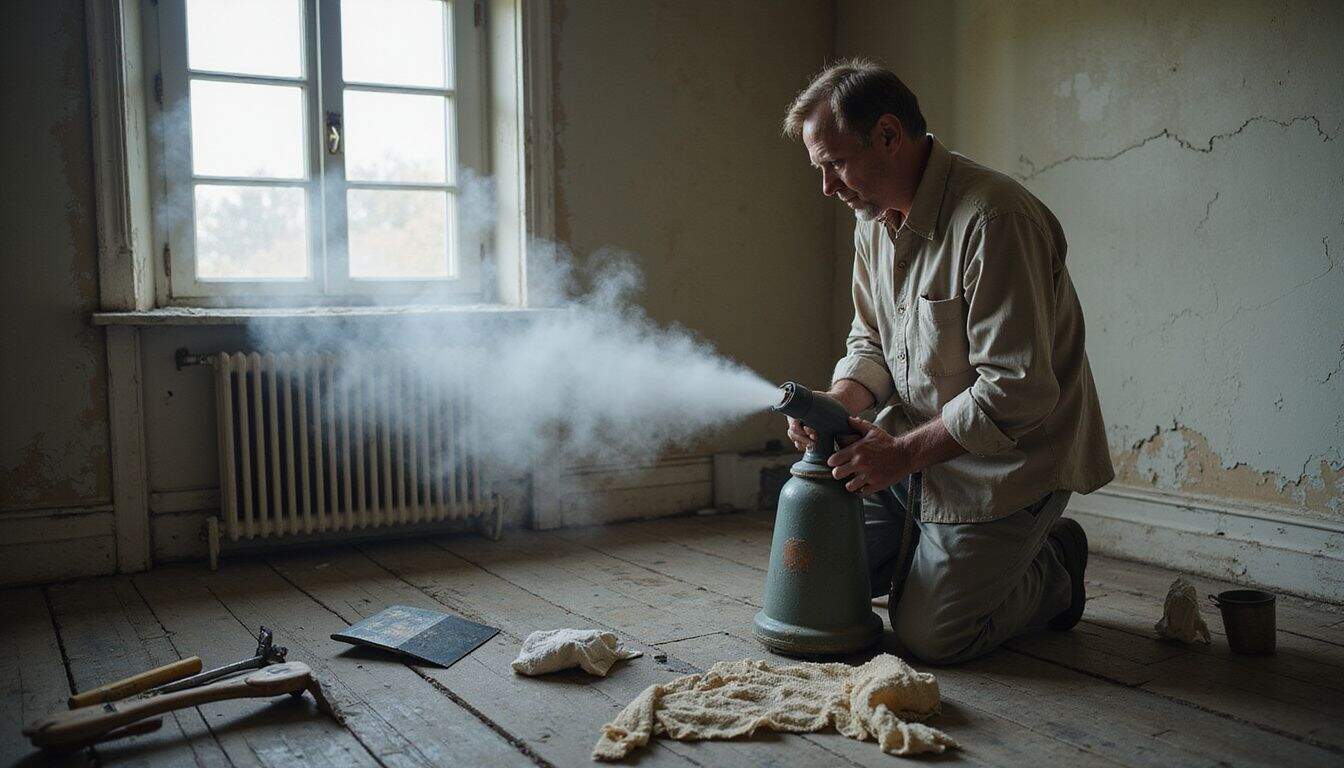
Putty knives are great for scraping wallpaper, but steamers make tough jobs easier—with less time and frustration. Wallpaper steamers cost less than $75, saving you hours of scraping by hand.
For single-use projects, renting is usually cheaper than buying your own. Fill your steamer with warm tap water first, so it boils faster. Hold the steam plate against the wall for about 30 seconds—it softens the glue quickly.
Steamers work especially well on older wallpaper, or paper painted over multiple times—that stuff is tricky without steam. The heat melts the glue, letting you easily peel off pieces in layers.
For protection, wear gloves so the steam doesn’t burn you. Many women say that hanging art on concrete feels simpler than removing old wallpaper without steamers.
Prepare the Room
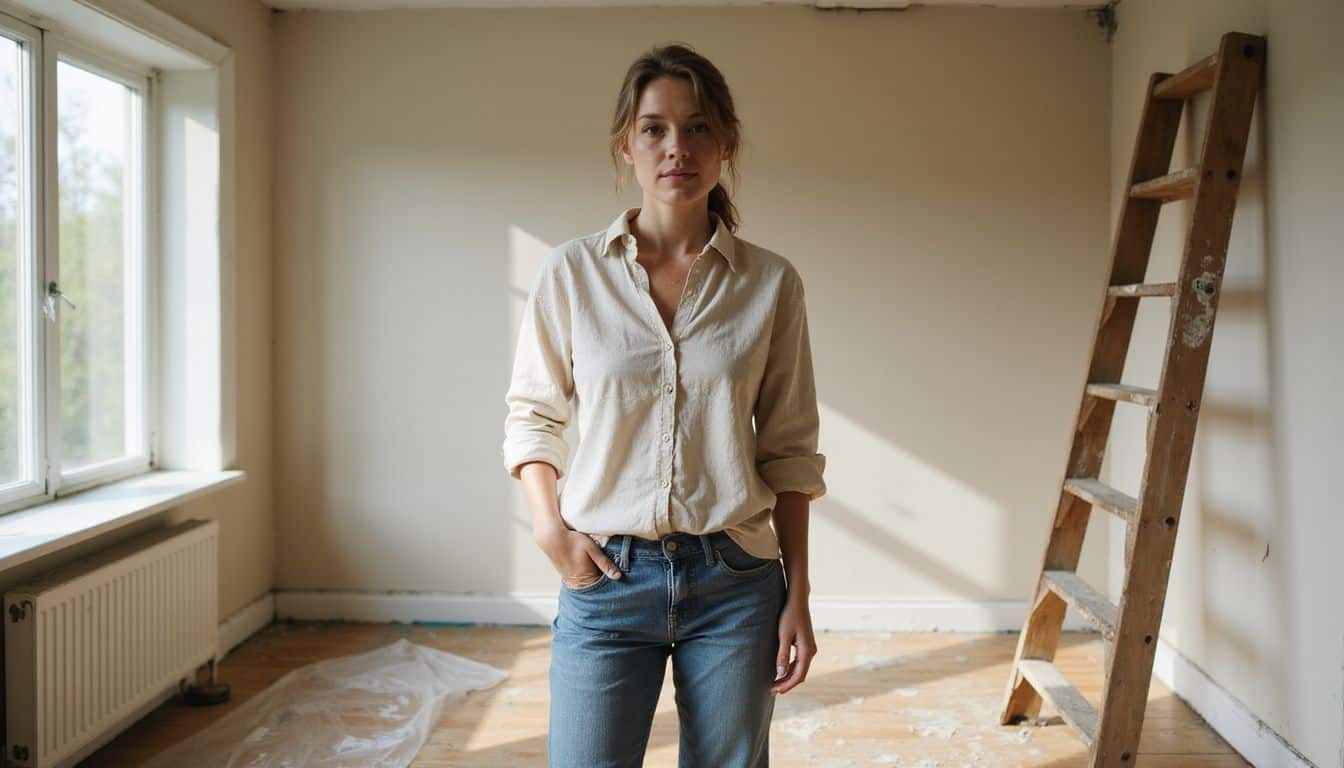
Clear the room of all items and cover your floors with plastic sheets before you start — this small step saves hours of cleanup later and keeps your stuff safe from drips and splashes.
Clear the space and protect floors
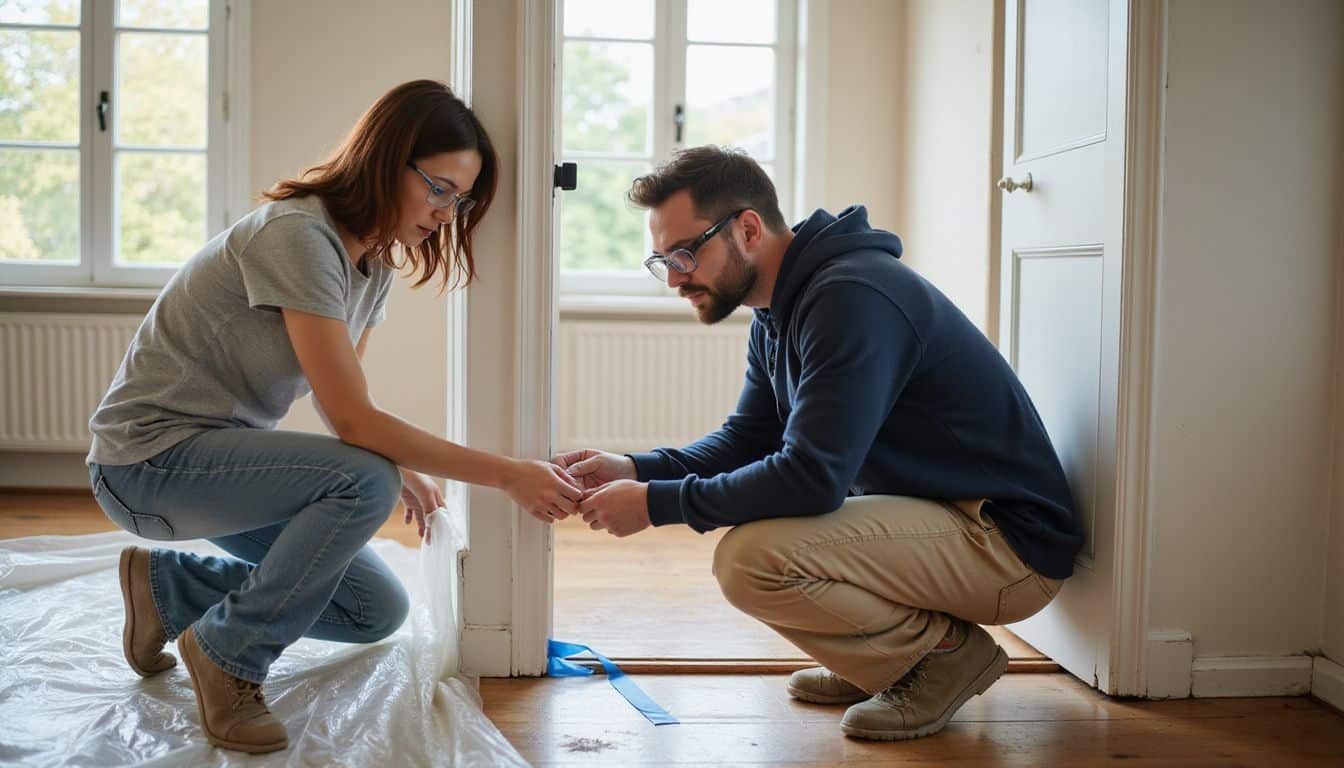
First off, push furniture away from your walls. Remove all pictures, mirrors, and the covers from your light switches. Doing this early saves time—and your belongings—from getting messy.
Next, lay plastic drop cloths over the floors to catch falling scraps and drips, taping the edges directly onto the baseboards. Wallpaper removal gets really messy…think tiny bits of glue and paper everywhere.
Even an average-sized room takes a whole day and creates lots of junk, so protecting floors upfront is key.
Also important: seal off any openings like vents, outlets, and lighting fixtures with plastic sheets and painter’s tape. Shut off the electricity for outlets in your work area—just to stay safe.
And don’t forget protective eyewear, since wallpaper debris and cleaning sprays can easily splash into your eyes. Doing a thorough setup at the start saves you cleanup trouble later, and keeps your home safe throughout the messy process.
Cut the power to outlets in the area
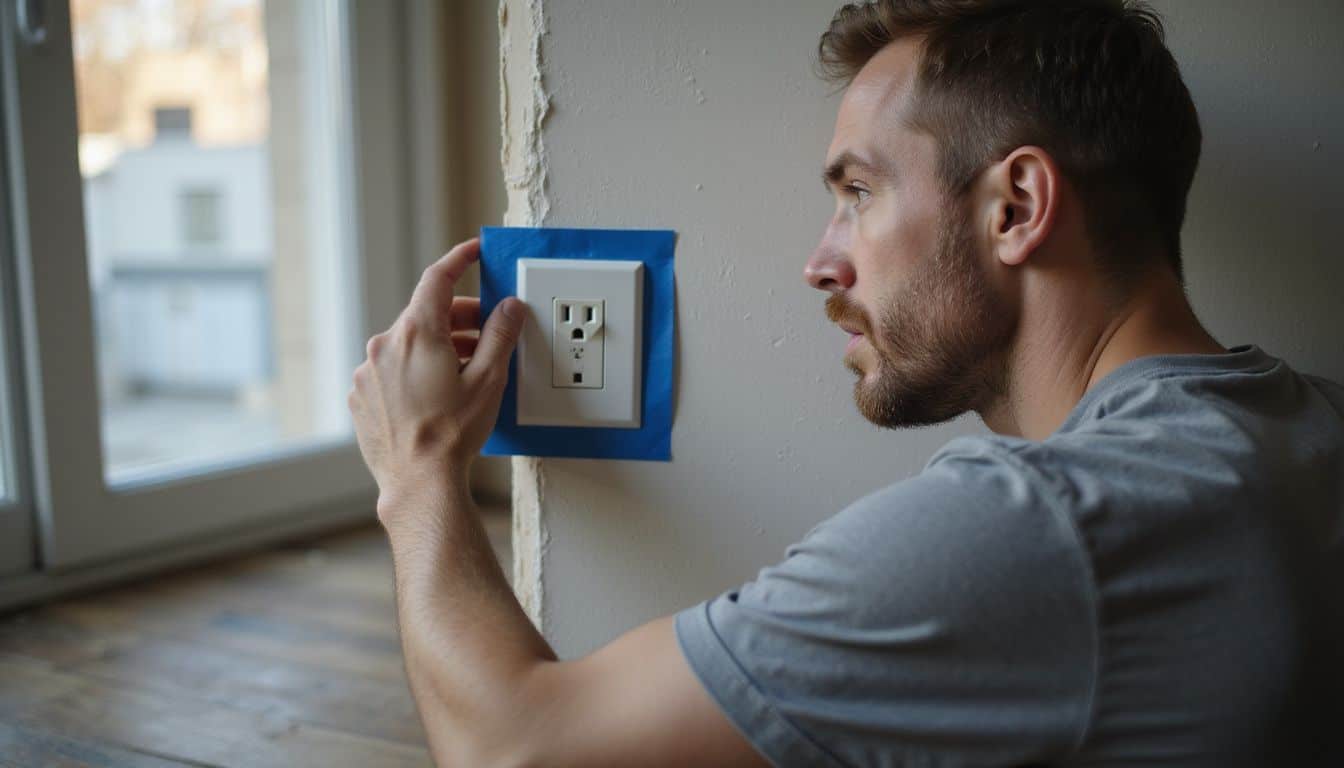
Clear out the room, cover your floors, then focus on safety. Start by shutting off electricity to every outlet in the workspace—water near power sources spells trouble. Grab a scraper tool to take outlet covers off.
Then, put painter’s tape over each outlet for added safety. This simple move protects you from shocks if wallpaper stripper or steam gets too close. Lots of folks skip this step, but it’s definitely worth a few extra minutes.
Your safety comes first, even if it slows you down a little.
Identify Your Wallpaper Type

Know your wallpaper type before you start—strippable peels off in sheets while traditional needs more work… Learn which type you have to pick the right removal method!
Strippable wallpaper
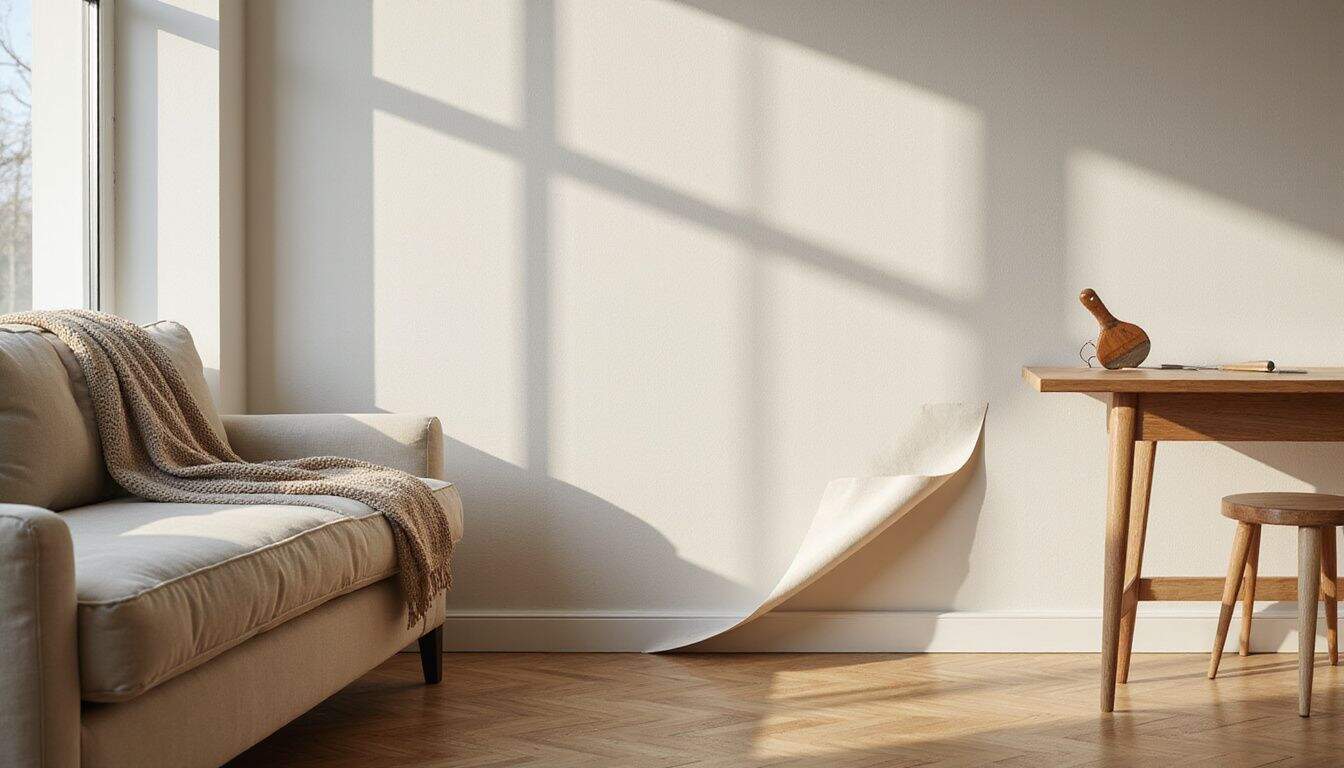 Strippable wallpaper is the simplest type to remove. Just slip a putty knife under a bottom corner and gently pull upward—usually, it peels away in one easy motion. Most sections lift off cleanly, without sticky residue.
Strippable wallpaper is the simplest type to remove. Just slip a putty knife under a bottom corner and gently pull upward—usually, it peels away in one easy motion. Most sections lift off cleanly, without sticky residue.
Unlike traditional wallpaper that takes hours of scraping and steaming, modern strippable papers let you finish quickly.
Sometimes, stubborn spots need extra attention. Use a scoring tool to lightly cut the surface of the wallpaper, then continue peeling. Usually, the whole removal takes just one day—not an entire weekend like regular wallpaper demands.
Many DIY homeowners prefer this type for fast, easy redecorating.
Peelable wallpaper
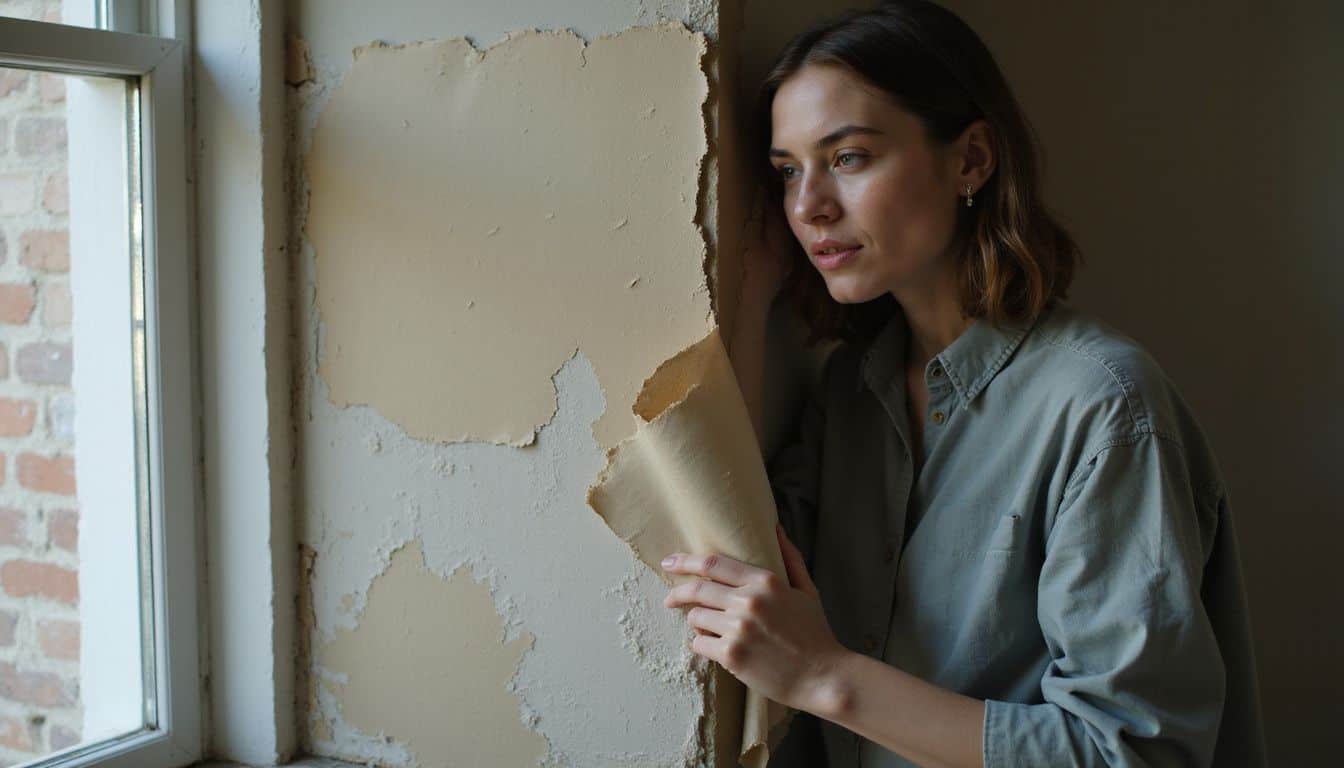 Peelable wallpaper sits between traditional and fully removable types—perfect for easy DIY decorating. The top layer pulls off cleanly, leaving just the thin backing stuck to your wall.
Peelable wallpaper sits between traditional and fully removable types—perfect for easy DIY decorating. The top layer pulls off cleanly, leaving just the thin backing stuck to your wall.
Usually, you can peel it away smoothly, in nice big sections.
To remove this wallpaper, lift the corner gently and pull straight back at about a 180-degree angle. If a corner isn’t loose enough, score it lightly with a utility knife to get started.
A spray bottle filled with warm water softens leftover backing paper. For extra stubborn spots, warm them briefly with a hairdryer. Some users notice peelable wallpaper is gentler on underlying paint—but stay careful with older or unprimed paint layers.
Traditional wallpaper
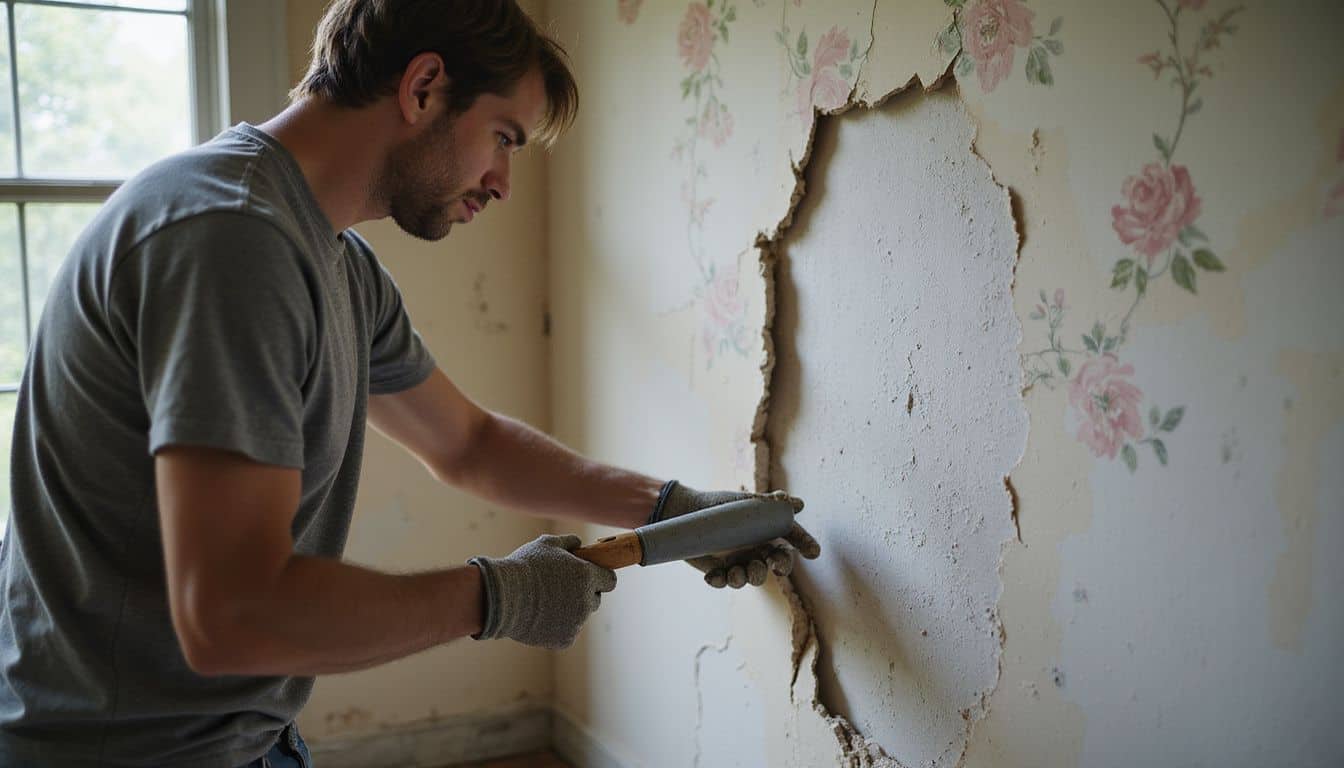
Traditional wallpaper sticks tight—it uses a strong glue that’s tough to remove. Getting it off can take some real effort. You’ll need a scoring tool, a little gadget that pokes holes to let remover seep in easier.
Lots of homeowners like liquid wallpaper stripper—works well on stubborn paper. Or, you can mix warm water and vinegar in a spray bottle—a handy homemade fix to loosen up adhesive.
Usually, older paper rips off in small bits instead of large sheets, so grab your wallpaper scraper and get ready for some work. Watch your drywall or plaster closely as you scrape—you don’t want to scratch or gouge the surface below.
Methods for Removing Wallpaper
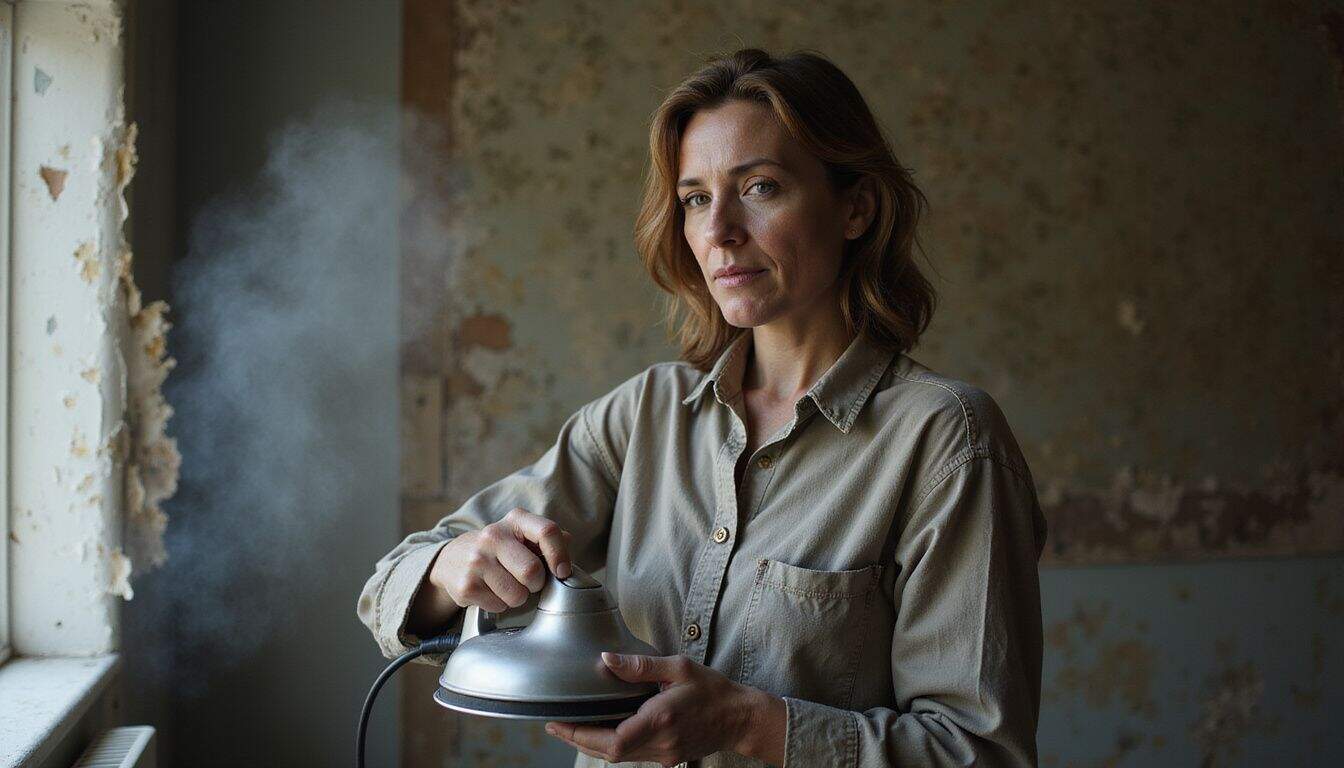
Removing wallpaper doesn’t need to be a sticky nightmare with these five proven methods. Each technique works for different wallpaper types, so pick the one that matches your walls and get ready to strip away the old look.
Use a wallpaper stripper solution
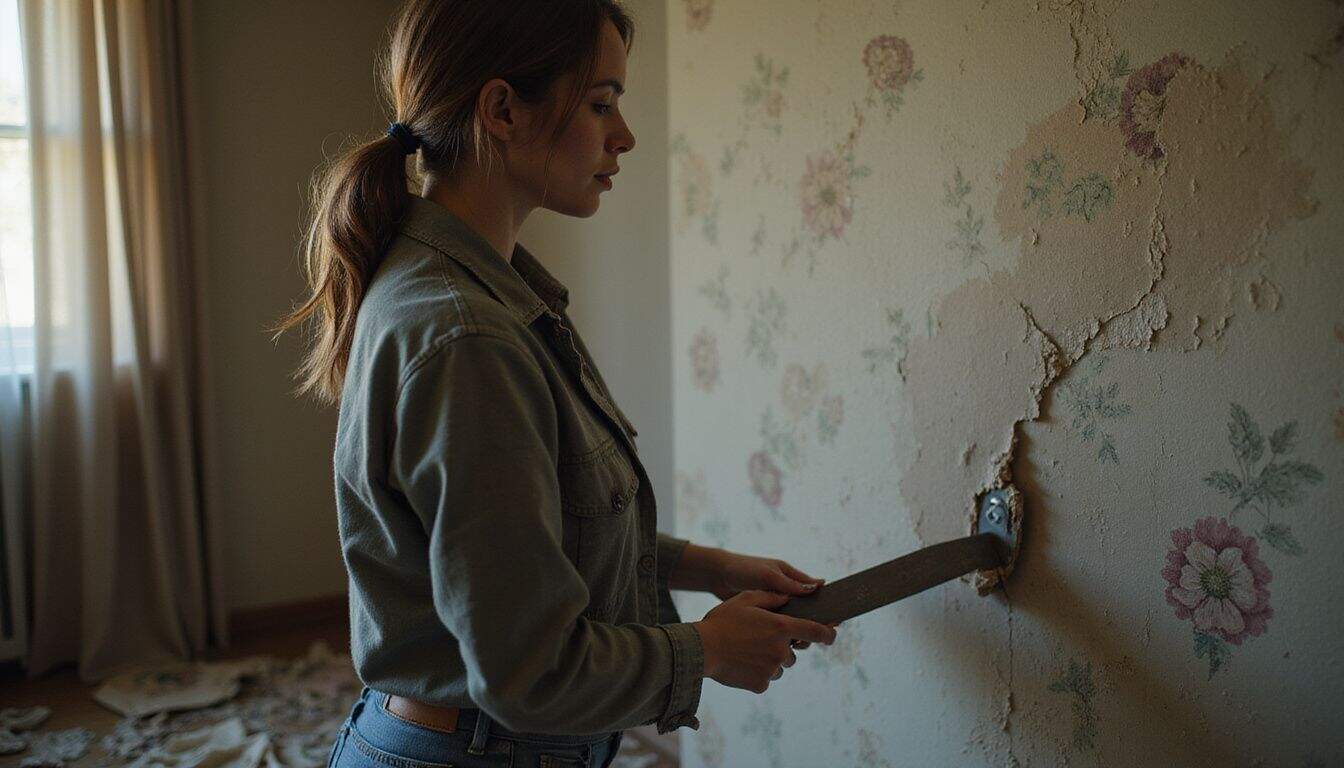 Wallpaper stripper solution makes removing tough wall coverings a breeze. My favorite is DIF Wallpaper Stripper—it quickly dissolves even strong adhesives. First, I lightly score the wallpaper using a special scoring tool, helping the liquid seep through faster.
Wallpaper stripper solution makes removing tough wall coverings a breeze. My favorite is DIF Wallpaper Stripper—it quickly dissolves even strong adhesives. First, I lightly score the wallpaper using a special scoring tool, helping the liquid seep through faster.
Then, I mix the solution exactly as the package instructs, spraying or sponging it carefully onto the surface.
The secret to success involves waiting—let the solution sit for about 20 minutes. This allows time for chemicals to soak in and break down stubborn glue beneath the paper.
Once soaked properly, a putty knife can easily lift wallpaper away from your wall. Commercial wallpaper solutions work better at dissolving glue compared to homemade options. Working in small, manageable sections, around three feet wide, keeps the job simple and protects the sheetrock below.
Doing it this way saves you time—and lots of scraping!
Remove with steam
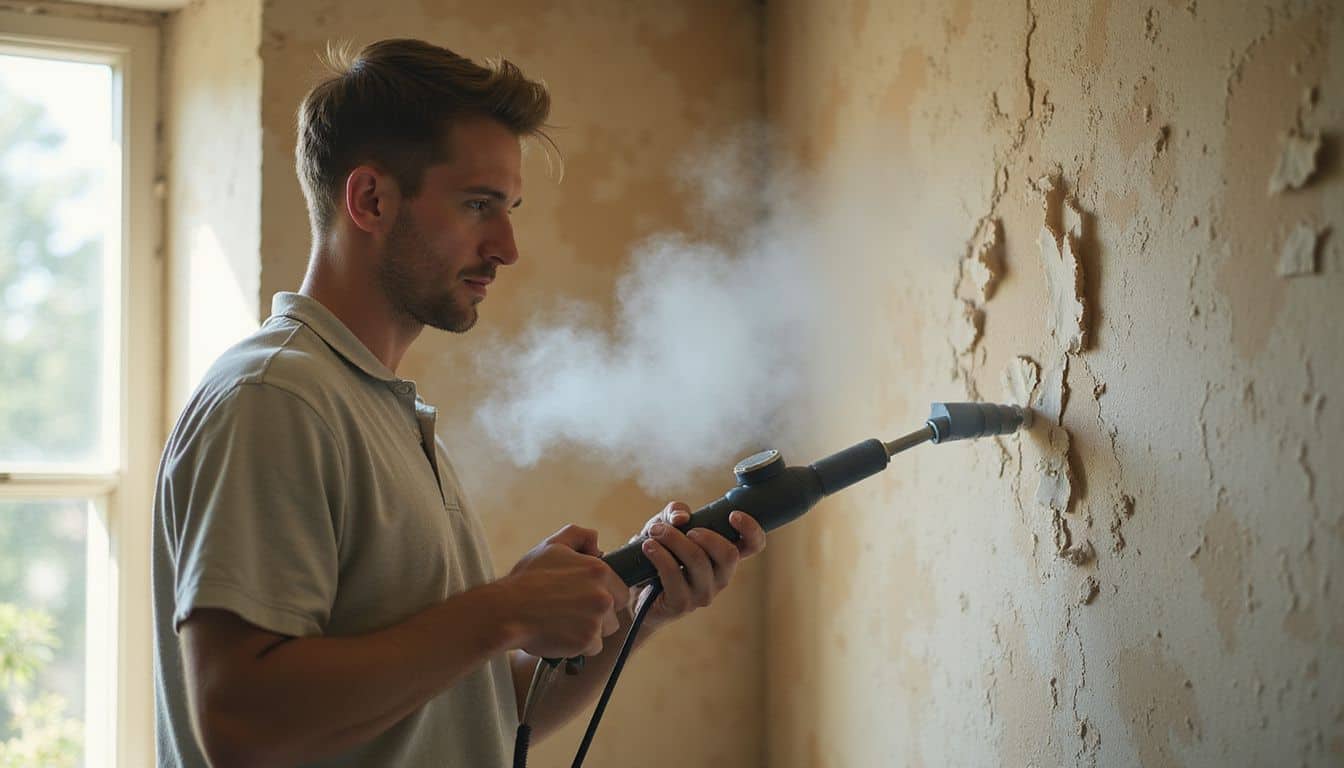
If you need a speedy way to remove tough wallpaper, using steam does the trick. You can either buy a wallpaper steamer for under $75, or rent one for just a single job. To heat quicker, fill it with warm tap water—then hold the steam plate firmly on the wall for about 30 seconds.
The heat breaks down the glue underneath, making it easy to scrape off.
Work on small areas—around three square feet each—for quicker results. As the paper loosens from the steam, grab your putty knife or paint scraper and gently peel it off. Renting makes good sense if you rarely remove wallpaper, since it’s cheaper than buying one outright.
Steam works great on most standard wallcoverings that won’t easily peel off by hand.
Try DIY mixtures like vinegar and water
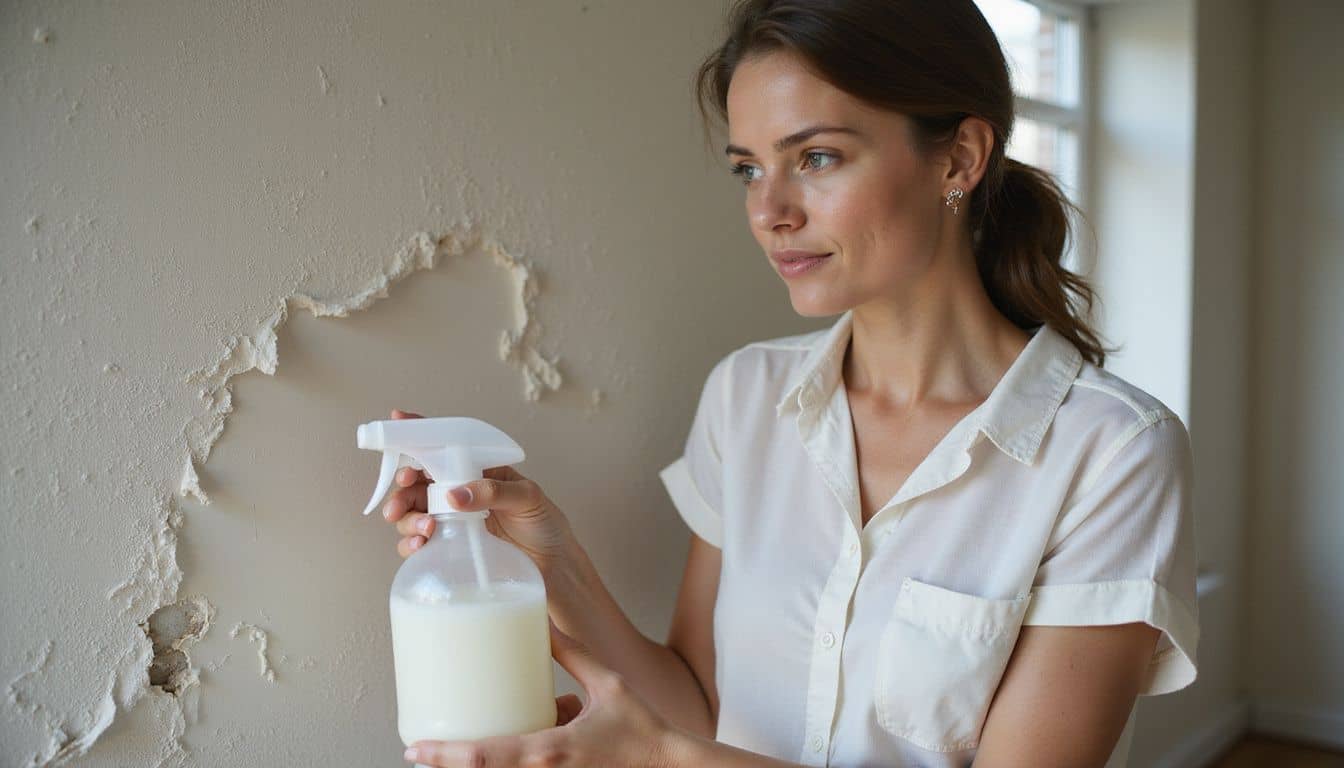
Vinegar is your secret weapon against tough wallpaper. Just mix equal parts warm water and white vinegar in a spray bottle—two cups each usually covers a regular wall pretty well.
Spray the mixture evenly, let it sit for 10 to 15 minutes, and watch the vinegar’s acid dissolve the glue.
Another handy DIY trick involves fabric softener. Combine it with water in a 1:4 mix (one part softener, four parts water). Then, apply it all over your wallpaper. Fabric softener breaks down glue, making wallpaper easy to peel right off.
I’ve tested these methods myself, and vinegar usually handles older wallpaper better.
Next up—we’ll talk about quickly clearing leftover adhesive from your walls.
Removing Wallpaper Adhesive
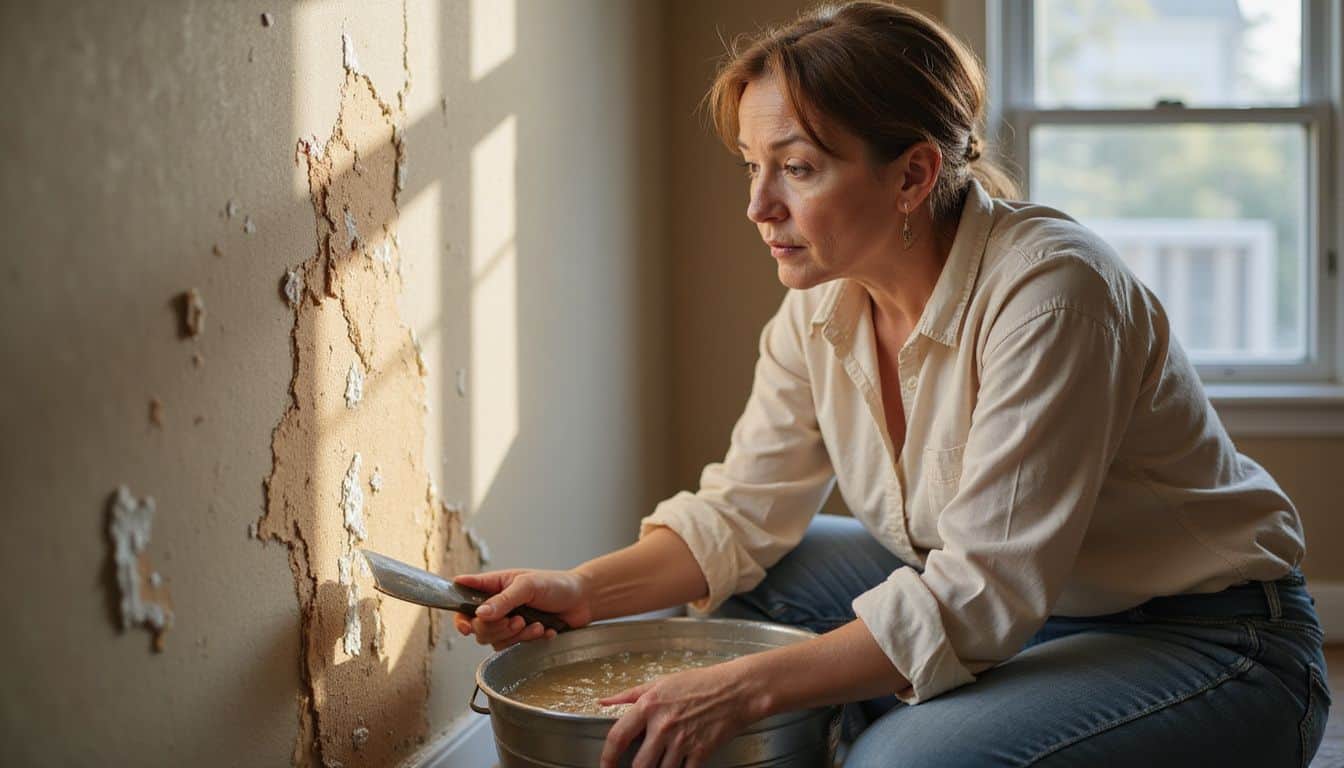
The sticky gunk left behind can ruin your fresh paint job if not dealt with first. You’ll need to scrape off all glue with a putty knife, then wash walls with a mix of warm water and dish soap.
Scrape off remaining glue
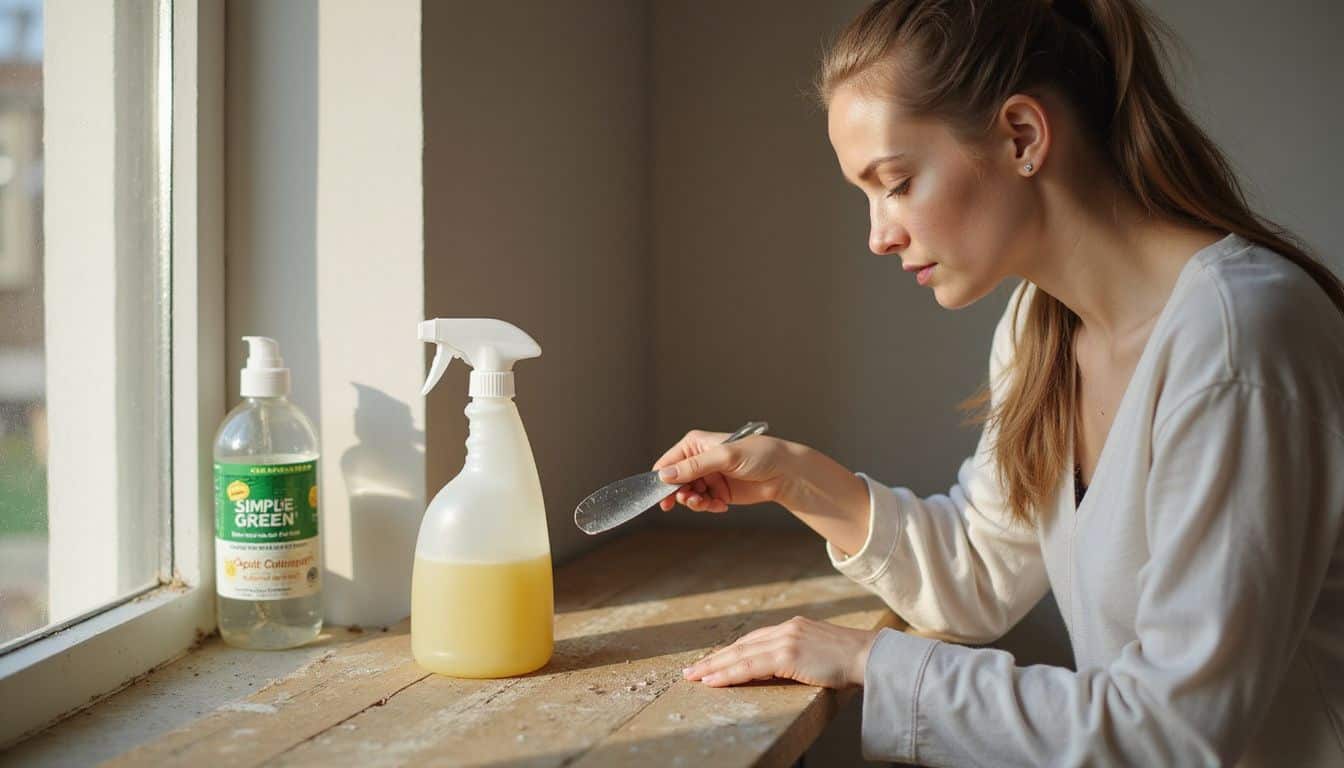
After removing wallpaper, glue residue often stays behind and clings to your walls. To tackle this stubborn mess, grab a putty knife. Scrape carefully—working section-by-section—and hold the knife at a 45-degree angle.
That way, you avoid damaging the drywall underneath. For extra stubborn areas, spray a bit of Simple Green cleaner onto the glue. Let it sit about 5 to 10 minutes—then scrape again.
Mixing your own remover at home saves money and gets the glue off just as easily. A simple mix of warm water, vinegar, and a few drops of dish soap works perfectly. Just throw this into a spray bottle, spritz your walls, and let it sit until the glue loosens.
Many women prefer this wet approach since it creates much less dust inside the house. To cover entire walls faster, a regular garden sprayer works great and speeds up the job.
Clean the walls thoroughly
After scraping off the wallpaper glue, it’s time to clean those walls well. Use a bucket and mix warm water with trisodium phosphate (TSP)—works wonders on tough glue spots. Use a sponge and gently apply the mixture, working in smaller sections.
Let that soak into sticky areas for about 5 to 10 minutes. Next, use a clean towel or rag to wipe away all that loosened dirt and glue. If some glue stays stubborn, carefully use a putty knife to lift it without harming your wall.
Before starting your new paint or wallpaper, walls need to be fully clean and dry. Even tiny leftover bits can ruin how the finish looks. Open some windows for better air flow, or run a fan—it helps walls dry faster.
Clean and dry walls set the stage perfectly for your fresh decorating ideas.
Looking ahead, wallpaper removal methods will probably get easier and faster. New tools and products will enter the market, making it simpler to take wallpaper down—no more time-consuming scraping or soaking.
Advances in wall coverings, like easy-to-remove adhesives and pre-treated backings, are already showing up. Products like peel-and-stick wallpapers are catching on quickly, since they save time and effort.
Wallpaper stripping might soon be one of the easiest home improvement chores you do.
How Will Wallpaper Removal Methods Evolve in 2025?
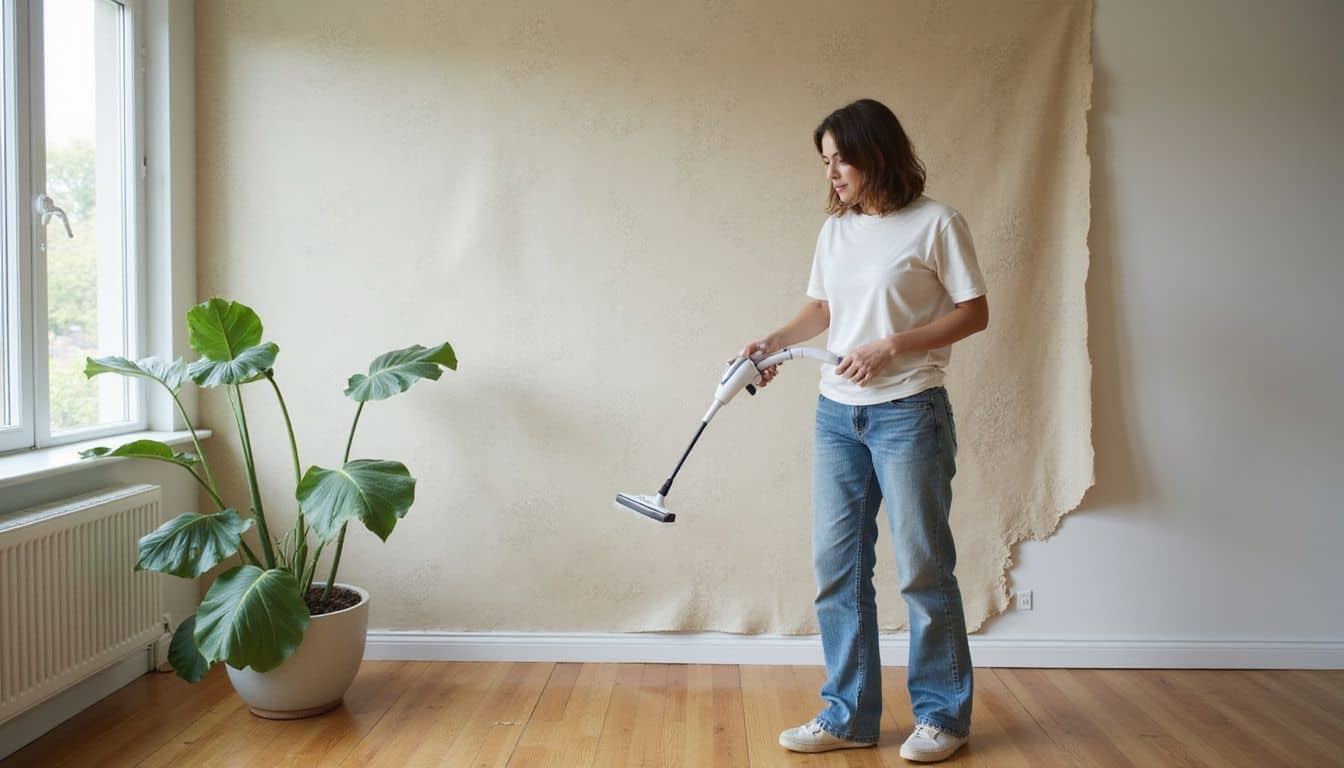
By 2025, wallpaper removal tools will become quicker and smarter. New liquid removers—using plant-based enzymes—will dissolve old adhesives in just five minutes instead of the usual 20-30 minutes.
Some companies even have test sprays that shift color once they’re ready, giving clear signals when it’s time to scrape. Better scoring tools will make DIY wallpaper stripping simpler without hurting your walls.
Technology will also shape future wallpaper removal methods. Small, handheld steamers—about the size of an iron—will soon replace today’s large equipment. They’ll cost under $50, use 70% less water, and get the job done twice as fast.
Smart sensors on these steamers will recognize wallpaper types automatically and adjust heat levels accordingly. For tougher spots, improved primers will cover leftover glue bits, letting you paint smoothly over them without bumps.
Scraping endlessly with a putty knife for hours will become old news, making your home updates quicker and easier.
People Also Ask
What tools do I need for DIY wallpaper removal?
You’ll need a wallpaper scoring tool, some liquid wallpaper remover, and painter’s tape. The scoring tool makes tiny holes in the wallpaper—helping the remover soak through easily. Also, have a bucket of warm water nearby.
Can all wallpaper be removed the same way?
Not exactly. Removable wallpaper usually peels right off, quick and easy. Older, traditional wallpapers need more scoring and extra soaking. And some vintage wallpapers can stick to lath underneath—so handle them gently.
Is painting over wallpaper a good alternative to removal?
Painting over wallpaper often causes bubbles or peeling later on. It’s usually best to remove wallpaper first, getting a nice, even surface. If painting over is your only choice, apply an oil-based primer first, then use acrylic paint.
How long does wallpaper removal usually take?
Removing wallpaper from one room typically takes 1–2 days. Easy-to-remove types come off in just a few hours, but wallpaper with lots of layers can take more time. Go slow—being patient protects walls from damage.
References
https://home.howstuffworks.com/home-improvement/home-diy/projects/how-to-remove-wallpaper.htm (2025-01-29)
https://www.dumpsters.com/blog/how-to-remove-wallpaper (2023-06-26)
https://www.hgtv.com/design/decorating/design-101/how-to-remove-wallpaper
https://www.oliveandjunehome.com/blog/3-ways-to-remove-wallpaper
https://www.blesserhouse.com/the-best-way-to-remove-wallpaper-3-methods-tried-and-tested/
https://www.architecturaldigest.com/story/how-to-remove-wallpaper
https://livetteswallpaper.com/blogs/tips-tricks/how-to-remove-peel-and-stick-wallpaper (2024-07-17)
https://www.bhg.com/how-to-remove-wallpaper-7866925 (2023-09-17)
https://inmyownstyle.com/strip-wallpaper-easy-way.html (2014-01-19)
https://www.nashpainting.com/blog/home-remedies-to-remove-wallpaper-with-these-tips
https://missmustardseed.com/how-to-remove-wallpaper-glue-from-walls/
https://hovia.com/how-to-remove-wallpaper-glue
https://www.masterclass.com/articles/how-to-remove-wallpaper
